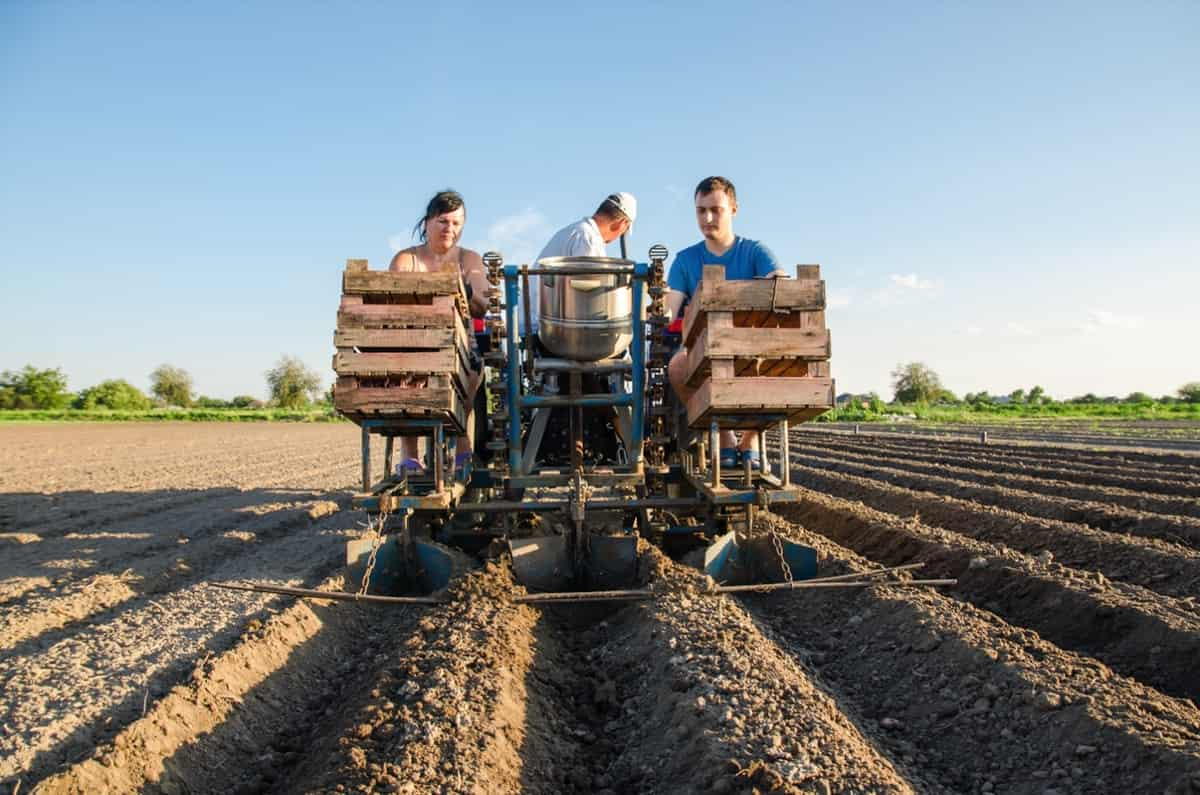Welcome to the world of bountiful harvests and booming profits! If you’re a vegetable enthusiast or a professional grower looking to take your yields to new heights, this blog is for you. Today, we delve into the incredible benefits of utilizing a 12-month vegetable planner.

Picture this: a well-organized, efficiently managed garden that yields a cornucopia of fresh produce throughout the year while your profits skyrocket. Sounds too good to be true? Well, prepare to be pleasantly surprised as we uncover the secrets behind maximizing your harvest with the power of a comprehensive 12-month vegetable planner.
What is the Monthly Vegetable Planner?
The Monthly Vegetable Planner is a valuable tool designed to assist gardeners and farmers in effectively managing their vegetable cultivation throughout the year. It systematically plans and schedules monthly vegetable planting, maintenance, and harvest activities. With this planner, growers can optimize their crop rotations, ensure efficient space utilization, and plan for succession planting to maximize productivity. Additionally, the Monthly Vegetable Planner aids in effective pest and disease management, allowing growers to implement preventive measures and control strategies. This planner allows growers to make informed decisions, streamline operations, and achieve higher yields and profits.
Benefits of Using a 12-Month Vegetable Planner
- Seasonal Crop Rotation and Planning: By incorporating crop rotation techniques, the planner helps improve soil health, reduce pests and diseases, and optimize nutrient availability, leading to healthier plants and higher yields.
- Efficient Space Utilization and Succession Planting: The planner lets growers make the most of their available space by strategically planning multiple harvests from the same plot. This reduces downtime and maximizes productivity.
- Effective Pest and Disease Management: With the planner, growers can anticipate potential pest and disease risks and implement proactive measures to prevent or mitigate them. This results in healthier plants and higher-quality produce.
- Optimized Resource Allocation: The planner aids in planning irrigation schedules, optimizing water usage, and managing fertilizer and nutrient application. This efficient resource allocation leads to better plant growth, improved nutrient uptake, and reduced waste.
- Enhanced Harvest Planning and Marketing: By aligning planting schedules with market demand, growers can ensure a consistent fresh produce supply, increasing customer satisfaction and potential for higher profits.
- Long-Term Sustainability: The planner promotes sustainable farming practices by encouraging crop diversification, reducing reliance on synthetic inputs, and promoting ecological balance in the garden.
- Improved Time Management: With a structured plan, growers can streamline their operations, prioritize tasks, and make the most efficient use of their time, resulting in increased efficiency and reduced stress.
Implementing a 12-Month Vegetable Planner
- Assess Your Needs and Goals: Determine your gardening objectives, such as self-sufficiency, specific crop preferences, or market demands. This helps tailor your planner to your unique requirements.
- Select the Right Vegetables and Varieties: Consider factors like climate, soil conditions, and personal preferences when choosing vegetables. Opt for easy-to-grow varieties that align with your growing region and desired harvest times.
- Plot Planning and Mapping: Create a garden layout that maximizes space utilization and supports crop rotation. Divide your garden into sections based on planting dates and crop families to optimize soil fertility and minimize disease risks.
- Track Progress and Make Adjustments: Record planting dates, yields, and observations throughout the year. Regularly review and adjust your planner based on the performance of different crops, weather patterns, and other variables.
- Incorporate Sustainability and Eco-Friendly Practices: Embrace organic gardening techniques, conserve water, promote biodiversity, and use natural pest control methods. Integrate composting, cover cropping, and companion planting to enhance soil health and minimize environmental impact.
- Follow a Vegetable Planting Calendar: Consult a reliable vegetable planting calendar that guides when to sow seeds or transplant seedlings for various vegetables. This ensures you stay on track with your planting schedule and optimize harvest timings.
Planning and Designing a Vegetable Garden
Planning a vegetable garden starts with selecting a sunny location, as most vegetables require at least eight hours of sunlight for optimal growth. Leafy greens can tolerate less light. Raised beds are a great option for efficient gardening, offering tidiness, intensive planting, and fewer weed problems. Choosing the right size for beds is important, usually four to five feet wide, allowing easy access to the center. Adequate space between beds is necessary for comfortable movement and working. Understanding the three growing seasons (cool, warm, and cold) helps select crops suitable for each season. Frost dates play a crucial role in determining planting times, and crop rotation is essential for reducing pests and nutrient depletion. Succession planting ensures continuous harvests while considering pest and disease control measures is important for a healthy garden.
At What Time of Year Should You Plant Different Vegetables?
When planning your vegetable garden, it’s important to consider the timing of planting to ensure you can harvest your crops during the school term.
- Speedy crops: These vegetables can be ready for harvest within one school term, which is 3 to 13 weeks (up to three months) after sowing or planting. Examples include beetroot, carrots, cucumber, French beans, lettuce, marrows, courgettes, peas (spring term), radish, spinach, and turnip.
- Medium-term crops: These crops are sown or planted in one term and harvested in the next term, which is 14 to 25 weeks (three to six months) later. Examples include broad beans, cabbage (early), onion sets (spring), peas (autumn sown), sweet corn, and tomatoes.
- Slow-growing or long-season crops: These crops are sown or planted in one term and harvested in the next or even the following term, 26 to 52 weeks (six months or more) later. Examples include broccoli, onion sets (autumn planting), Brussels sprouts, parsnips, leeks, and potatoes (main crop).
To determine the spacing between your vegetables, consider the ultimate height and spread of the crop. The spacing allows for weeding, air circulation, and optimal growth. The tables provided guidelines for traditional open allotment style growing and raised beds.
In case you missed it: Central Georgia Vegetable Planting Calendar: Gardening in Different Seasons and Month-Wise Schedule

Perfect Vegetable Calendar for Your Garden: Better Yield and Profits
Maximize your garden’s potential with the perfect vegetable calendar! Plan your planting and harvesting strategically for optimal yield and profits. Consider crop rotation, companion planting, and seasonal variations. By aligning nature’s rhythms, you’ll enjoy bountiful harvests, reduce pests and diseases, and boost your gardening success.
12-month Vegetable Planner
Perfect Vegetable Calendar for Your Garden Month Wise
| Month | Cool/Winter Season Vegetable North India | Rainy and Summer Season Vegetable South India |
| January | Brinjal | Lettuce, Spinach, Gourds, Melons, Radish, Carrot, Onion, Tomato, Okra, Brinjal, Bean |
| February | Applegourd, Bittergourd, Bottle gourd, Cucumber, French Beans, Okra, Sponge Gourd, Watermelon, Spinach | Lettuce, Spinach, Gourds, Melons, Radish, Carrot, Onion, Tomato, Okra, Brinjal, Bean |
| March | Applegourd, Bittergourd, Bottle gourd, Cucumber, French Beans, Okra, Sponge Gourd, Watermelon, Spinach | Amaranthus, Coriander, Gourds, Beans, Melons, Spinach, Okra |
| April | Capsicum | Onion, Amaranthus, Coriander, Gourds, Okra, Tomato, Chilli |
| May | Onion, Pepper, Brinjal | Okra, Onion, Chilli |
| June | All gourds, Brinjal, Cucumber, Cauliflower (Early), Okra, Onion, Sem, Tomato, Pepper | All Gourds, Solanaeceae, Almost all vegetables |
| July | All gourds, Cucumber, Okra, Sem, Tomato | All Gourds, Solanaeceae, Almost all vegetables |
| August | Carrot, Cauliflower, Radish, Tomato | Carrot, Cauliflower, Beans, Beet |
| September | Cabbage, Carrot, Cauliflower, Peas, Radish, Tomato, Lettuce | Cauliflower, Cucumber, Onion, Peas, Spinach |
| October | Beet, Brinjal, Cabbage, Cauliflower, Lettuce, Peas, Radish, Spinach, Turnip | Brinjal, Cabbage, Capsicum, Cucumber, Beans, Peas, Spinach, Turnip, Watermelon |
| November | Turnip, Tomato, Radish, Pepper, Peas, Beet | Beet, Eggplant, Cabbage, Carrot, Beans, Lettuce, Melon, Okra, Turnip |
| DECEMBER | Tomato | Lettuce, Pumpkin, Watermelon, Muskmelon, Ash gourd, Ridge gourd, Bitter gourd, Bottle gourd, Cucumber, Chilly, Cabbage |
Ideal Germination Conditions
| Vegetable | Ideal ˚F | Ideal ˚C | Range ˚F | Range ˚C | Direct/Transplant | North India | South India |
| Tinda | 77 | 25 | 68-85 | 20-30 | Direct | Feb-Mar/Jun-Jul | Feb-Mar/Jun-Jul |
| Beet | 70 | 20 | 50-75 | 10-30 | Direct | Oct-Nov | Aug-Nov |
| Bittergourd | 77 | 25 | 68-85 | 20-30 | Direct | Feb-Mar/Jun-Jul | Nov-Dec/Dec-Jan/Jun-Jul |
| Bottle Gourd | 77 | 25 | 68-85 | 20-30 | Direct | Feb-Mar/Jun-Jul | Nov-Dec/Dec-Jan/Jun-Jul |
| Brinjal/Eggplant | 85 | 30 | 70-95 | 21-35 | Transplant | Jan-Feb/May-Jun/Oct-Nov | Jun-Jul/Oct-Nov/Jan-Feb |
| Cabbage | 70 | 20 | 45-70 | 10-20 | Transplant | Sep-Oct | Jun-Jul/Oct-Nov |
| Capsicum | 70 | 21 | 60-77 | 15-25 | Transplant | Nov-Jan | Jul-Aug/Oct-Nov/Jan-Feb |
| Carrot | 80 | 25 | 45-85 | 10-30 | Direct | Aug-Sep-Oct | Aug-Nov |
| Cauliflower (early) | 77 | 25 | 77-80 | 25-27 | Transplant | Mid-June | Jun-Jul/Aug-Sep |
| Cauliflower (late) | 65 | 18 | 60-70 | 16-20 | Transplant | Aug-Sep-Oct | Jun-Jul |
| Cauliflower (midseason) | 58 | 15 | <60 | <16 | Transplant | Sep-Oct | Jun-Jul/Aug-Sep |
| Cucumber | 95 | 16 | 60-95 | 16-32 | Direct | Feb-Mar/Jun-Jul | Jun-Jul/Sep-Oct/Dec-Jan |
In case you missed it: Minnesota Vegetable Gardening: Calendar and Planting Guide

Conclusion
Utilizing a 12-month vegetable planner can significantly enhance your harvest and increase profits. By strategically planning and rotating crops throughout the year, you can optimize yield, ensure a diverse range of vegetables, and maximize your gardening success.
- Feed Your Flock for Less: Top 10 Tips to Save on Chicken Feed
- Ultimate Guide to Ossabaw Island Hog: Breeding, Raising, Diet, and Care
- Hatching Answers: The Top 10 Reasons Your Chickens Aren’t Laying Eggs
- Eggs and Economics: Breaking Down the Cost of Raising Backyard Chickens
- Defend Your Greens: Proven Methods to Keep Iguanas Out of Your Garden
- Ultimate Guide to Cinnamon Queen Chicken: A Comprehensive Guide for Beginners
- Ultimate Guide to California Tan Chicken: Breeding, Raising, Diet, Egg-Production and Care
- Ultimate Guide to Marsh Daisy Chicken: Breeding, Raising, Diet, and Care
- 10 Types of Chicken Farming Businesses You Can Start for Profits